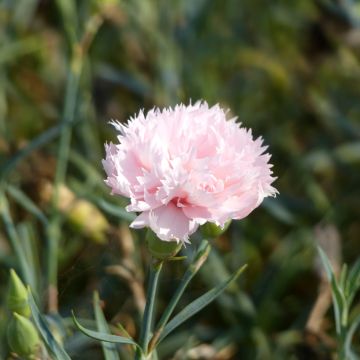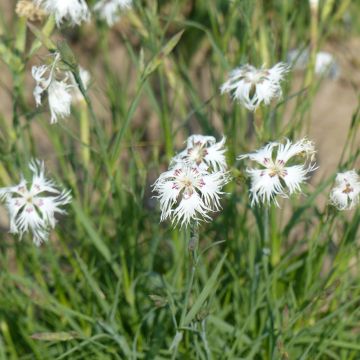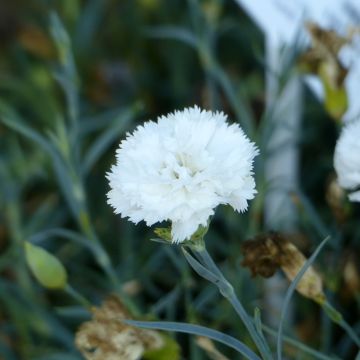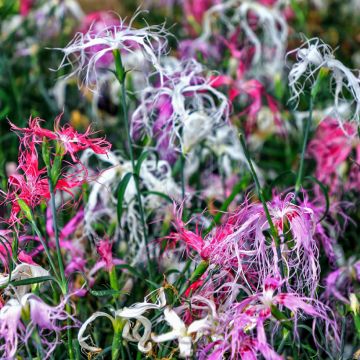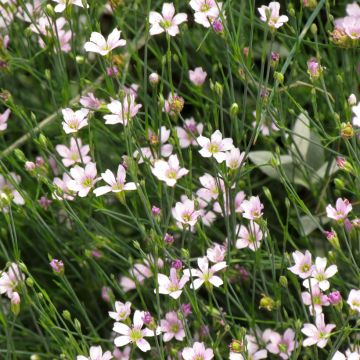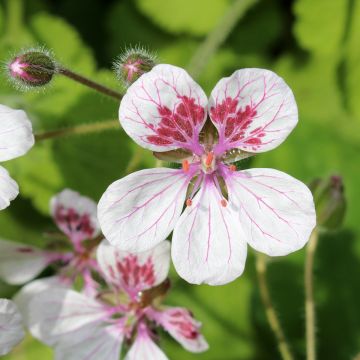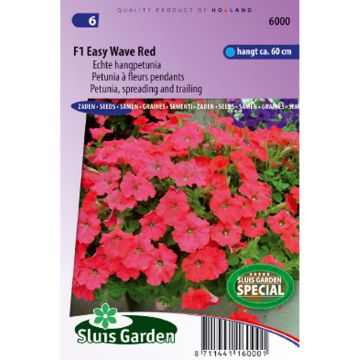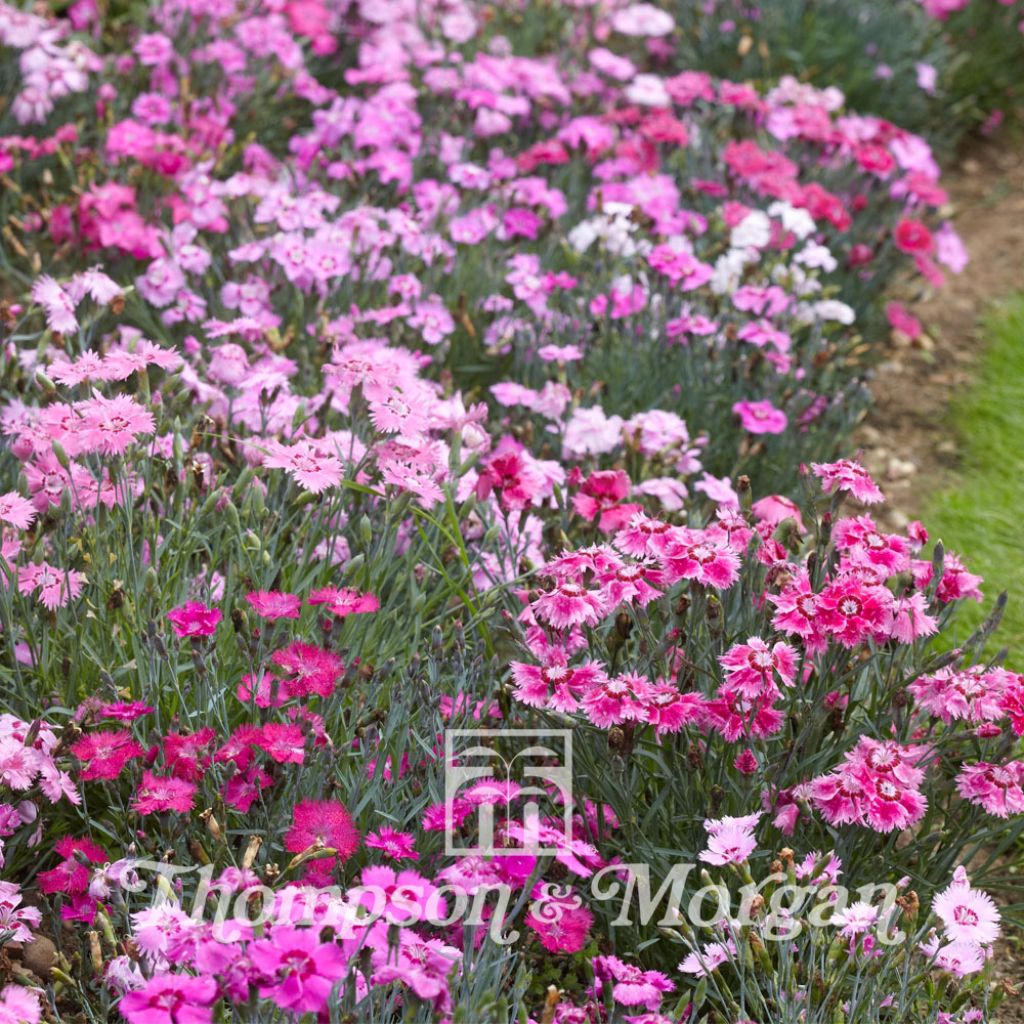

Dwarf Feathered Pink Sweetness Mixed Seeds - Dianthus plumarius
Dwarf Feathered Pink Sweetness Mixed Seeds - Dianthus plumarius
Dianthus plumarius Sweetness Mixed
Common Pink, Garden Pink, Feathered Pink
However, I have been sowing my flowers for 50 years.
Michel D., 03/09/2017
Special offer!
Receive a €20 voucher for any order over €90 (excluding delivery costs, credit notes, and plastic-free options)!
1- Add your favorite plants to your cart.
2- Once you have reached €90, confirm your order (you can even choose the delivery date!).
3- As soon as your order is shipped, you will receive an email containing your voucher code, valid for 3 months (90 days).
Your voucher is unique and can only be used once, for any order with a minimum value of €20, excluding delivery costs.
Can be combined with other current offers, non-divisible and non-refundable.
Home or relay delivery (depending on size and destination)
Schedule delivery date,
and select date in basket
This plant carries a 6 months recovery warranty
More information
We guarantee the quality of our plants for a full growing cycle, and will replace at our expense any plant that fails to recover under normal climatic and planting conditions.

Would this plant suit my garden?
Set up your Plantfit profile →
Description
Dianthus plumarius 'Sweetness Mixed' is a first-year flowering variety that forms small, dense, evergreen mounds covered with pink blooms from May to June. The charming fringed flowers are intensely fragrant. This fast-growing, robust perennial is ideal for rock gardens, growing over low retaining walls or in pots. It thrives in full sun and tolerates dry soil and limestone.
Feathered Pink 'Sweetness Mixed' belongs to the Caryophyllaceae family. It is selected from Dianthus caryophyllus, a Mediterranean species with a distinctive clove-like scent and D. plumarius, a European perennial that has long been a favourite in cottage gardens, hence the names Garden Pink or Cottage Pink. 'Sweetness mix' produces compact plants that quickly reach a mature height of 15-20 cm for a spread of 20 cm, forming dense clumps. The evergreen bluish to grey-green leaves are linear. From May to June-July, bouquets of very fragrant blooms with fringed petals appear on short stems. They display various harmonious shades of pink, from creamy rose to hot purplish-pink.
Dianthus plumarius 'Sweetness Mixed' is ideal for edging, dry slopes and rock gardens, alongside other low-growing perennials such as Helianthemums, Artemisia lanata, bellflowers, rock cress, Phlox subulata, Delosperma cooperi, Erigeron karvinskianus or Geranium sanguineum. Grow along passageways such as garden paths or near an entrance to fully enjoy its sweetly scented blooms! It is also suited for container gardens, hanging baskets or pots on the patio or balcony. Make sure to provide the plants with light soil, perfect drainage and a little fertilizer.
Flowering
Foliage
Plant habit
Botanical data
Dianthus
plumarius
Sweetness Mixed
Caryophyllaceae
Common Pink, Garden Pink, Feathered Pink
Cultivar or hybrid
Other Dianthus seeds
View all →Planting and care
Sow from February to July in good quality, well-drained sowing mix or compost, barely covering the seeds. Place in a propagator or polythene bag and keep in a light room at a temperature of 18-20°C until germination (generally 14 to 30 days). Make sure the soil stays moist but not waterlogged. When the seedlings are strong enough to handle, transplant them into pots and harden them off gradually before planting them out in a sunny location, in well-drained soil. Make sure to leave about 30 cm between each plant.
Dianthus plumerius grow in ordinary soil that is loose, rich in humus and very well drained. It gives good results in limestone and stony soils that are fairly moist to dry. It is a very drought resistant, sun-loving plant that is hardy down to -15°C. To encourage repeat flowering in September, cut back the plant slightly after the first rush of blooms. In rich soil, pruning after flowering also helps maintain a tidy, dense habit. In poor soil, it can help to feed with a balanced fertilizer in March. Dianthus plants are rather short-lived. Take cuttings or divide ragged-looking plants every 3 years.
Sowing period
Intended location
Planting & care advice
-
, onOrder confirmed
Reply from on Promesse de fleurs
Similar products
Haven't found what you were looking for?
Hardiness is the lowest winter temperature a plant can endure without suffering serious damage or even dying. However, hardiness is affected by location (a sheltered area, such as a patio), protection (winter cover) and soil type (hardiness is improved by well-drained soil).

Photo Sharing Terms & Conditions
In order to encourage gardeners to interact and share their experiences, Promesse de fleurs offers various media enabling content to be uploaded onto its Site - in particular via the ‘Photo sharing’ module.
The User agrees to refrain from:
- Posting any content that is illegal, prejudicial, insulting, racist, inciteful to hatred, revisionist, contrary to public decency, that infringes on privacy or on the privacy rights of third parties, in particular the publicity rights of persons and goods, intellectual property rights, or the right to privacy.
- Submitting content on behalf of a third party;
- Impersonate the identity of a third party and/or publish any personal information about a third party;
In general, the User undertakes to refrain from any unethical behaviour.
All Content (in particular text, comments, files, images, photos, videos, creative works, etc.), which may be subject to property or intellectual property rights, image or other private rights, shall remain the property of the User, subject to the limited rights granted by the terms of the licence granted by Promesse de fleurs as stated below. Users are at liberty to publish or not to publish such Content on the Site, notably via the ‘Photo Sharing’ facility, and accept that this Content shall be made public and freely accessible, notably on the Internet.
Users further acknowledge, undertake to have ,and guarantee that they hold all necessary rights and permissions to publish such material on the Site, in particular with regard to the legislation in force pertaining to any privacy, property, intellectual property, image, or contractual rights, or rights of any other nature. By publishing such Content on the Site, Users acknowledge accepting full liability as publishers of the Content within the meaning of the law, and grant Promesse de fleurs, free of charge, an inclusive, worldwide licence for the said Content for the entire duration of its publication, including all reproduction, representation, up/downloading, displaying, performing, transmission, and storage rights.
Users also grant permission for their name to be linked to the Content and accept that this link may not always be made available.
By engaging in posting material, Users consent to their Content becoming automatically accessible on the Internet, in particular on other sites and/or blogs and/or web pages of the Promesse de fleurs site, including in particular social pages and the Promesse de fleurs catalogue.
Users may secure the removal of entrusted content free of charge by issuing a simple request via our contact form.
The flowering period indicated on our website applies to countries and regions located in USDA zone 8 (France, the United Kingdom, Ireland, the Netherlands, etc.)
It will vary according to where you live:
- In zones 9 to 10 (Italy, Spain, Greece, etc.), flowering will occur about 2 to 4 weeks earlier.
- In zones 6 to 7 (Germany, Poland, Slovenia, and lower mountainous regions), flowering will be delayed by 2 to 3 weeks.
- In zone 5 (Central Europe, Scandinavia), blooming will be delayed by 3 to 5 weeks.
In temperate climates, pruning of spring-flowering shrubs (forsythia, spireas, etc.) should be done just after flowering.
Pruning of summer-flowering shrubs (Indian Lilac, Perovskia, etc.) can be done in winter or spring.
In cold regions as well as with frost-sensitive plants, avoid pruning too early when severe frosts may still occur.
The planting period indicated on our website applies to countries and regions located in USDA zone 8 (France, United Kingdom, Ireland, Netherlands).
It will vary according to where you live:
- In Mediterranean zones (Marseille, Madrid, Milan, etc.), autumn and winter are the best planting periods.
- In continental zones (Strasbourg, Munich, Vienna, etc.), delay planting by 2 to 3 weeks in spring and bring it forward by 2 to 4 weeks in autumn.
- In mountainous regions (the Alps, Pyrenees, Carpathians, etc.), it is best to plant in late spring (May-June) or late summer (August-September).
The harvesting period indicated on our website applies to countries and regions in USDA zone 8 (France, England, Ireland, the Netherlands).
In colder areas (Scandinavia, Poland, Austria...) fruit and vegetable harvests are likely to be delayed by 3-4 weeks.
In warmer areas (Italy, Spain, Greece, etc.), harvesting will probably take place earlier, depending on weather conditions.
The sowing periods indicated on our website apply to countries and regions within USDA Zone 8 (France, UK, Ireland, Netherlands).
In colder areas (Scandinavia, Poland, Austria...), delay any outdoor sowing by 3-4 weeks, or sow under glass.
In warmer climes (Italy, Spain, Greece, etc.), bring outdoor sowing forward by a few weeks.































